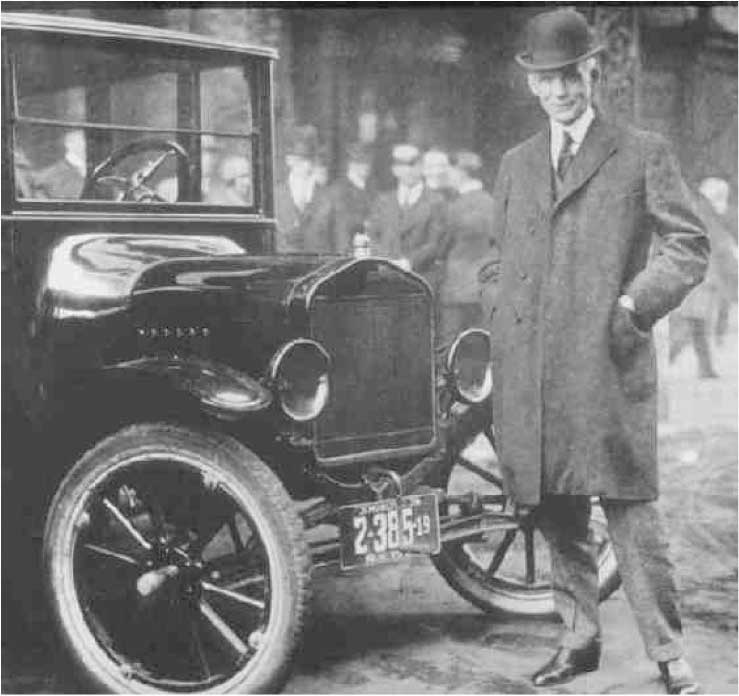This is “Targeted Marketing versus Mass Marketing”, section 5.1 from the book Marketing Principles (v. 1.0). For details on it (including licensing), click here.
For more information on the source of this book, or why it is available for free, please see the project's home page. You can browse or download additional books there. To download a .zip file containing this book to use offline, simply click here.
5.1 Targeted Marketing versus Mass Marketing
Learning Objectives
- Distinguish between targeted marketing and mass marketing and explain what led to the rise of each.
- Describe how targeted marketing can benefit firms.
- Explain why companies differentiate among their customers.
Choosing select groups of people and organizations to sell to is called targeted marketingChoosing select groups of people to sell to., or differentiated marketing. It is a relatively new phenomenon. Mass marketingSelling the same product to all consumers., or undifferentiated marketing, came first. It evolved along with mass production and involves selling the same product to everybody. You can think of mass marketing as a shotgun approach: you blast out as many marketing messages as possible on every medium available as often as you can afford.Robert Spellings, Jr., “Mass Marketing Is Dead. Make Way for Personal Marketing,” The Direct Marketing Voice, March 20, 2009, http://thedirectmarketingvoice.com/2009/03/20/mass-marketing-is-dead-make-way-for-personal-marketing (accessed December 2, 2009). (By contrast, targeted marketing is more like shooting a rifle; you take careful aim at one type of customer with your message.)
Automaker Henry Ford was very successful at both mass production and mass marketing. Ford pioneered the modern-day assembly line early in the twentieth century, which helped him cost-effectively pump out huge numbers of identical Model T automobiles. They came in only one color: black. “Any customer can have a car painted any color he wants, so long as it is black,” Ford used to joke. He also advertised in every major newspaper and persuaded all kinds of publications to carry stories about the new, inexpensive cars. By 1918, half of all cars on America’s roads were Model Ts.Henry Ford, My Life and Work (Garden City, NY: Garden City Publishing Co., 1922), 72.
Figure 5.1

You could forget about buying a custom Model T from Ford in the early 1900s. The good news? The price was right.
Then Alfred P. Sloan, the head of General Motors (GM), appeared on the scene. Sloan began to segment consumers in the automobile market—to divide them up by the prices they wanted to pay and the different cars they wanted to buy. His efforts were successful, and in the 1950s, GM overtook Ford in the as the nation’s top automaker.José María Manzanedo, “Market Segmentation Strategies. How to Maximize Opportunities on the Potential Market,” February 20, 2005, http://www.daemonquest.com/en/research_and_insight/2006/10/11/market_segmentation_strategies_how_to_maximize_opportunities_ on_the_potential_market (accessed April 13, 2012). (You might be interested to know that before GM declared bankruptcy in 2009, it was widely believed the automaker actually had too many car models. Apparently, “old habits die hard,” as the saying goes.)
Benefits of Segmenting and Targeting Markets
The story of General Motors raises an important point, which is that segmenting and targeting markets doesn’t necessarily mean “skinnying down” the number of your customers. In fact, it can help you enlarge your customer base by giving you information with which to successfully adjust some component of your offering—the offering itself, its price, the way you service and market it, and so on. More specifically, the process can help you do the following:
- Avoid head-on competition with other firms trying to capture the same customers
- Develop new offerings and expand profitable brands and products lines
- Remarket older, less-profitable products and brands
- Identify early adopters
- Redistribute money and sales efforts to focus on your most profitable customers
- Retain “at-risk” customers in danger of defecting to your competitors
The trend today is toward more precise, targeted marketing. Figuring out “who’s who” in terms of your customers involves some detective work, though—often market research. A variety of tools and research techniques can be used to segment markets. Government agencies, such as the U.S. Census Bureau, collect and report vast amounts of population information and economic data that can reveal changing consumption trends. We will talk more about market research in Chapter 10 "Gathering and Using Information: Marketing Research and Market Intelligence".
Technology is also making it easier for even small companies and entrepreneurs to gather information about potential customers. For example, the online game company GamePUMA.com originally believed its target market consisted of U.S. customers. But when the firm looked more closely at who was downloading games from its Web site, they were people from all over the globe.
The great product idea you had? As we explained in Chapter 3 "Consumer Behavior: How People Make Buying Decisions", companies are now using the Internet to track people’s Web browsing patterns and segment them into groups that can be marketed to. Even small businesses are able to do this cost effectively now because they don’t need their own software and programs. They can simply sign up online for products like Google’s AdSense and AdWords programs. You can locate potential customers by looking at blog sites and discussion forums on the Web. Big-boards.com has thousands of discussion forums you can mine to find potential customers interested in your product. Do you have a blog? Go to BlogPoll.com, and you can embed a survey in your blog to see what people think of your idea. If you have a Web site, you can download an application onto your iPhone that will give you up-to-the-minute information and statistics on your site’s visitors.
Getting a read on potential target markets doesn’t necessarily have to involve technology, though. Your own personal experience and talking to would-be buyers is an important part of the puzzle. Go where you think would-be buyers go—restaurants, malls, gyms, subways, grocery stores, daycare centers, and offices. Ask questions: What do they do during the day? What do they talk about? What products or services do you see them using? Are they having an enjoyable experience when using those products or are they frustrated?
Figure 5.2

The Healthy Choice line of frozen dinners was launched by a heart attack victim.
Healthy Choice frozen dinners were conceived as a result of questioning potential customers. The food-maker ConAgra launched the dinners in the late 1980s after its CEO, Charlie Harper, suffered a heart attack. One day a colleague complimented Harper on his wife’s tasty low-fat turkey stew. That’s when Harper realized there were people like him who wanted healthy convenience foods, so he began talking to them about what they wanted. Two years after the Healthy Choice line was launched, it controlled 10 percent of the frozen-dinner market.John Birchall, “Out to Launch in a Downturn,” Financial Times, June 4, 2009, 10.
Segmenting and Targeting a Firm’s Current Customers
Finding and attracting new customers is generally far more difficult than retaining your current customers. People are creatures of habit. Think about how much time and energy you spend when you switch your business from one firm to another—even when you’re buying something as simple as a haircut. If you aren’t happy with your hair and want to find a new hairdresser, you first have to talk to people with haircuts you like or read reviews of salons. Once you decide to go to a particular salon, you have to look it up on the Internet or your GPS device and hope you don’t get lost on the way. When you get to the salon, you must try to explain to the new hairdresser how you want your hair cut and hope he or she gets it right. You might also have to jump through some different hoops when you pay the bill. Perhaps the new salon won’t accept your American Express card or won’t let you put the tip on your card. However, once you have learned the ropes at the new salon, doing business with it gets much easier.
The same is true for firms when it comes to finding new customers. Finding customers, getting to know them, and figuring out what they really want is a difficult process—one that’s fraught with trial and error. That’s why it’s so important to get to know and form close relationships with your current customers. Broadly speaking, your goal is to do as much business with each one of them as possible.
The most recent economic downturn drove home the point of making the most of one’s current customers. During the downturn, new customers were hard to find, and firms’ advertising and marketing budgets were cut. Expensive, untargeted, shotgunlike marketing campaigns that would probably produce spotty results were out of the question. Consequently, many organizations chose to focus their selling efforts on their current customers.John Birchall, “Value Trend Tests Brand Loyalty,” Financial Times, March 31, 2009, 12.
This is the situation in which the adventure-based travel firm Backroads found itself in 2009. The California-based company increased its revenues by creating a personalized marketing campaign for people who had done business with Backroads in the past. The firm looked at information such as customers’ past purchases, the seasons in which they took their trips, the levels of activity associated with them, and whether or not the customers tended to vacation with children. The company then created three relevant trip suggestions for each customer based on the information. The information was sent to customers via postcards and e-mails with links to customized Web pages reminding them of the trips they had previously booked with Backroads and suggesting new ones. “In terms of past customers, it was like off-the-charts better [than past campaigns],” says Massimo Prioreschi, the vice president of Backroads’ sales and marketing group.“Lift Sales with Personalized, Multi-channel Messages: 6 Steps,” July 9, 2009, http://www.marketingsherpa.com/article.php?ident=31299 (accessed December 2, 2009).
In addition to studying their buying patterns, firms also try to get a better read on their customers by surveying them or hiring marketing research firms to do so. (A good source for finding marketing research companies is http://www.greenbook.org.) Firms also utilize loyalty programs to find out about their customers. For example, if you sign up to become a frequent flier with a certain airline, the airline will likely ask to you a number of questions about your likes and dislikes. This information will then be entered into a customer relationship management (CRM) system, and you might be e-mailed special deals based on the routes you tend to fly. British Airways goes so far as to track the magazines its most elite fliers like to read so the publications are available to them on its planes.
Many firms—even small ones—are using Facebook to develop closer relationships with their customers. Hansen Cakes, a Beverly Hills (California) bakery, has about two thousand customers who visit its Facebook page. During her downtime at the bakery, employee Suzi Finer posts “cakes updates” and photos of the goodies she’s working on to the site. Along with information about the cakes, Finer extends special offers to customers and mixes in any gossip about Hollywood celebrities she’s spotted in the area. After Hansen Cakes launched its Facebook page, the bakery’s sales shot up 15–20 percent. “And that’s during the recession,” notes Finer, who is obviously proud of the results she’s gotten.Jefferson Graham, “Cade Decoratero Finds Twitter a Sweet Recipe for Success,” USA Today, April 1, 2009, 5B. Twitter is another way companies are keeping in touch with their customers and boosting their revenues. For example, when the homemaking maven Martha Stewart schedules a book signing, she tweets her followers, and voilà—many of them show up at the bookstore she’s appearing at to buy copies. Finding ways to interact with customers that they enjoy—whether it’s meeting or “tweeting” them, or putting on events and tradeshows they want to attend—is the key to forming relationships with them.
Remember what you learned in Chapter 3 "Consumer Behavior: How People Make Buying Decisions", however: not all customers are created equal, including your current customers. Some customers are highly profitable, and others aren’t. Still others will actually end up costing your firm money to serve. Consequently, you will want to interact with some of them more than others.
Believe it or not, some firms deliberately “untarget” unprofitable customers. That’s what Best Buy did. In 2004, Best Buy got a lot of attention (not all of it good) when it was discovered the company had categorized its buyers into “personas,” or types of buyers, and created customized sales approaches for each. For example, an upper-middle-class woman was referred to as a “Jill.” A young urban man was referred to as a “Buzz.” And pesky, bargain-hunting customers that Best Buy couldn’t make much of a profit from? They were referred to as “devils” and taken off the company’s mailing lists.Meg Marco, “LEAKS: Best Buy’s Internal Customer Profiling Document,” The Consumerist, March 18, 2008, http://consumerist.com/368894/leaks-best-buys-internal-customer-profiling-document (accessed December 2, 2009).
The knife cuts both ways, though. Not all firms are equal in the minds of consumers, who will choose to do business with some companies rather than others. To consumers, market segmentation means: meet my needs—give me what I want.“Market Segmentation,” The Market Segmentation Company, http://www.marketsegmentation.co.uk/segmentation_tmsc.htm (accessed December 2, 2009).
Figure 5.3

Are you a “high maintenance” customer? Always trying to “work a deal”? Then don’t call Best Buy. They’ll call you.
© 2010 Jupiterimages Corporation
“Steps in One-to-One Marketing” outlines the steps companies can take to target their best customers, form close, personal relationships with them, and give them what they want—a process called one-to-one marketingForming close, personal relationships with customers and giving them exactly what they want.. In terms of our shotgun versus rifle approach, you can think of one-to-one marketing as a rifle approach, but with an added advantage: now you have a scope on your rifle.
One-to-one marketing is an idea proposed by Don Peppers and Martha Rogers in their 1994 book The One to One Future. The book described what life would be like after mass marketing. We would all be able to get exactly what we want from sellers, and our relationships with them would be collaborative, rather than adversarial. Are we there yet? Not quite. But it does seem to be the direction the trend toward highly targeted marketing is leading.
Steps in One-to-One Marketing
- Establish short-term measures to evaluate your efforts. Determine how you will measure your effort. For example, will you use higher customer satisfaction ratings, increased revenues earned per customer, number of products sold to customers, transaction costs, or another measure?
- Identify your customers. Gather all the information you can about your current customers, including their buying patterns, likes, and dislikes. When conducting business with them, include an “opt in” question that allows you to legally gather and use their phone numbers and e-mail addresses so as to can remain in contact with them.
- Differentiate among your customers. Determine who your best customers are in terms of what they spend and will spend in the future (their customer lifetime value), and how easy or difficult they are to serve. Identify and target customers that spend only small amounts with you but large amounts with your competitors.
- Interact with your customers, targeting your best ones. Find ways and mediums in which to talk to customers about topics they’re interested in and enjoy. Spend the bulk of your resources interacting with your best (high-value) customers. Minimize the time and money you spend on low-value customers with low growth potential.
- Customize your products and marketing messages to meet their needs. Try to customize your marketing messages and products in order to give your customers exactly what they want—whether it’s the product itself, its packaging, delivery, or the services associated with it.Curt Harler, “Reaching the Unreachable,” Smart Business Cleveland, December 2008, 92; Don Peppers and Martha Rogers, “The Short Way to Long-Term Relationships,” Sales and Marketing Management, May 1, 1999, 24; Don Peppers, Martha Rogers, and Bob Dorf, “Is Your Company Ready for One-to-One Marketing?” Harvard Business Review, January–February 1999, 151–60.
Audio Clip
Interview with Apurva Ghelani
http://app.wistia.com/embed/medias/de5a1d6419Listen to Apurva Ghelani, a senior sales engineer, from the marketing company Air2Web, discuss how companies like NASCAR get permission from consumers to them send advertisements via their wireless devices.
Key Takeaway
Choosing select groups of people to sell to is called targeted marketing, or differentiated marketing. Mass marketing, or undifferentiated marketing, involves selling the same product to everyone. The trend today is toward more precise, targeted marketing. Finding and attracting new customers is generally far more difficult than retaining one’s current customers, which is why organizations try to interact with and form relationships with their current customers. The goal of firms is to do as much business with their best customers as possible. Forming close, personal relationships with customers and giving them exactly what they want is a process called one-to-one marketing. It is the opposite of mass marketing.
Review Questions
- Using the shotgun and rifle analogy, how do mass marketing, targeted marketing, and one-to-one marketing compare with one another?
- How is technology making it easier for firms to target potential customers?
- Outline the steps companies need to take to engage in one-to-one marketing with their customers.




